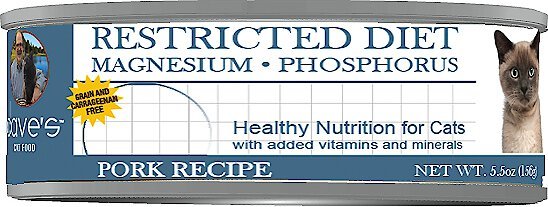4health Grain Free Adult Indoor Chicken Formula Dry Cat Food
The 4health Grain Free Adult Indoor Chicken Formula Dry Cat Food is just what your cat craves. Savory chicken flavor? Check. Long list of vitamins, minerals and nutrients? Also check! This bag of dry cat food features all the necessities for optimal indoor cat health. There’s taurine for a healthy heart, omega fatty acids for skin and coat health, probiotics and fiber for digestion, antioxidants for immune support and much more. Perfect dry cat food for adult cats of all breeds and sizes. Available in several different size bags to suit your needs.
The 4health Grain Free Adult Indoor Chicken Formula Dry Cat Food is just what your cat craves. Savory chicken flavor? Check. Long list of vitamins, minerals and nutrients? Also check! This bag of dry cat food features all the necessities for optimal indoor cat health. There’s taurine for a healthy heart, omega fatty acids for skin and coat health, probiotics and fiber for digestion, antioxidants for immune support and much more. Perfect dry cat food for adult cats of all breeds and sizes. Available in several different size bags to suit your needs.
- Quality food for adult indoor cats of all breeds and sizes
- Formulated with select ingredients to ensure dependable nutrition and underwent rigorous quality control processes
- Fortified with taurine to support heart health
- Contains guaranteed levels of zinc, selenium and vitamin E for immune-supporting antioxidant nutrition
- Blend of omega-6 and omega-3 fatty acids helps keep the skin and coat healthy and shiny
- Probiotics help maintain the proper balance in your cat digestive system; each cup of dry cat food provides live, active cultures that help support healthy digestion
- Fiber blend helps support healthy digestion
- Flavored with real chicken for a savory, meaty taste cats love
- Made in USA
- Cat food is available in several different pack sizes to suit your needs
- 4health Grain Free Formulation Indoor Cat Formula for Adult Cats is formulated to meet the nutritional levels established by the AAFCO Cat Food Nutrient Profiles for maintenance
- Note: The facility in which this cat food is made also makes food that may contain other ingredients, such as grains and trace amounts of these other ingredients may be present
Additional information
| Country of Origin | Made in USA |
|---|---|
| Breed Size | Extra Small, Small, Medium, Large, Extra Large |
| Flavor | Chicken |
| Health Features | Heart Health, Digestion Support, Skin & Coat Health |
| Indoor/Outdoor | Indoor |
| Life Stage | Adult |
| Primary Flavor | Chicken |
| Special Diets | Wheat Free, Probiotics, Soy Free, Grain Free, Omega Fatty Acids, Corn Free |
| Packaged Height | 22 in. |
| Packaged Length | 3 in. |
| Packaged Width | 14.25 in. |
| Manufacturer Part Number | 2451 |












by Kalani
My cats have been pretty picky eaters over the years. I have a 9 year old female tuxedo & a 4 year old female blue point Siamese mix. We had been getting the major brands from the grocery stores for many years now. Adjusting to multiple cats & different conditions had its challenges. Finding a balance of what worked was key & this brand worked well for our girls! I get both kinds of flavors & mix or just rotate between them. I don’t even bother with the old brands anymore!
by Nick
My 5 cats enjoy this food. It is hard to find a dry food that doesn’t contain grains for a reasonable price. Will be buying again.
by Kari
Love this food. It is good quality and price point. Keeps my cat’s stomach well as he is sensitive to some foods.
by Mary
My cat has used this brand from TSC all his life. He is now 12 years old and his teeth and fur quality are excellent, according to our vet. Because there’s no fillers (like corn and other grains), he has not had problems with inflammation or high blood sugar. Highly recommend!